On a breezy day in March, hundreds of bright kites swayed gracefully above D.C. against the backdrop of blue skies and the Washington Monument.
The Blossom Kite Festival in D.C. is a signature event that has, for years, been part of the National Cherry Blossom Festival, which commemorates Tokyo’s gift of 3,000 cherry trees to D.C. and celebrates the “enduring friendship between the people of the United States and Japan,” the festival’s website said.
This year’s kite festival welcomed back Mikio Toki, a native of Japan and a master of traditional Edo-style kites, a distinctive style of kite first developed in Edo, which is present-day Tokyo.
In honor of Asian American and Pacific Islander Heritage Month, WTOP is spotlighting the work of the professional kite-maker and the artistry and importance of kite-making and kite-flying in many Asian cultures.
Kites carry prayers, wishes for children
Toki, who was born in Japan’s capital, said there are many different ways of designing kites.
“Japan is a very small country,” Toki said. “But each place … has different types of kites.”
Edo kites are rectangular with a hummer that makes a sound when it’s flying in the sky, and lines some 14 to 17 inches long and no tail.
It took a few tries for Toki’s kites to catch the wind and take flight, but when they did, they hovered serenely among other kites that were frenetically swaying during a particularly windy D.C. day.
Taking flight is the culmination of a process that combines art, engineering, aviation and flight.
Toki starts with the image of the kite, drawing inspiration from Kabuki or a story. Then, he draws a picture of what he wants the kite to look like before hand painting it on a washi paper, a traditional handmade Japanese paper typically made from the fibers of the paper mulberry plant. It’s on the UNESCO list of “Intangible Cultural Heritage” items.
As for the construction, Toki splits aged bamboo and carves them for the kite’s assembly, putting between 14 to 17 lines to finish it off.
The lines often get tangled, but since Toki has been making and flying kites for decades, “I’m a professional, so I can do it easier,” he said.
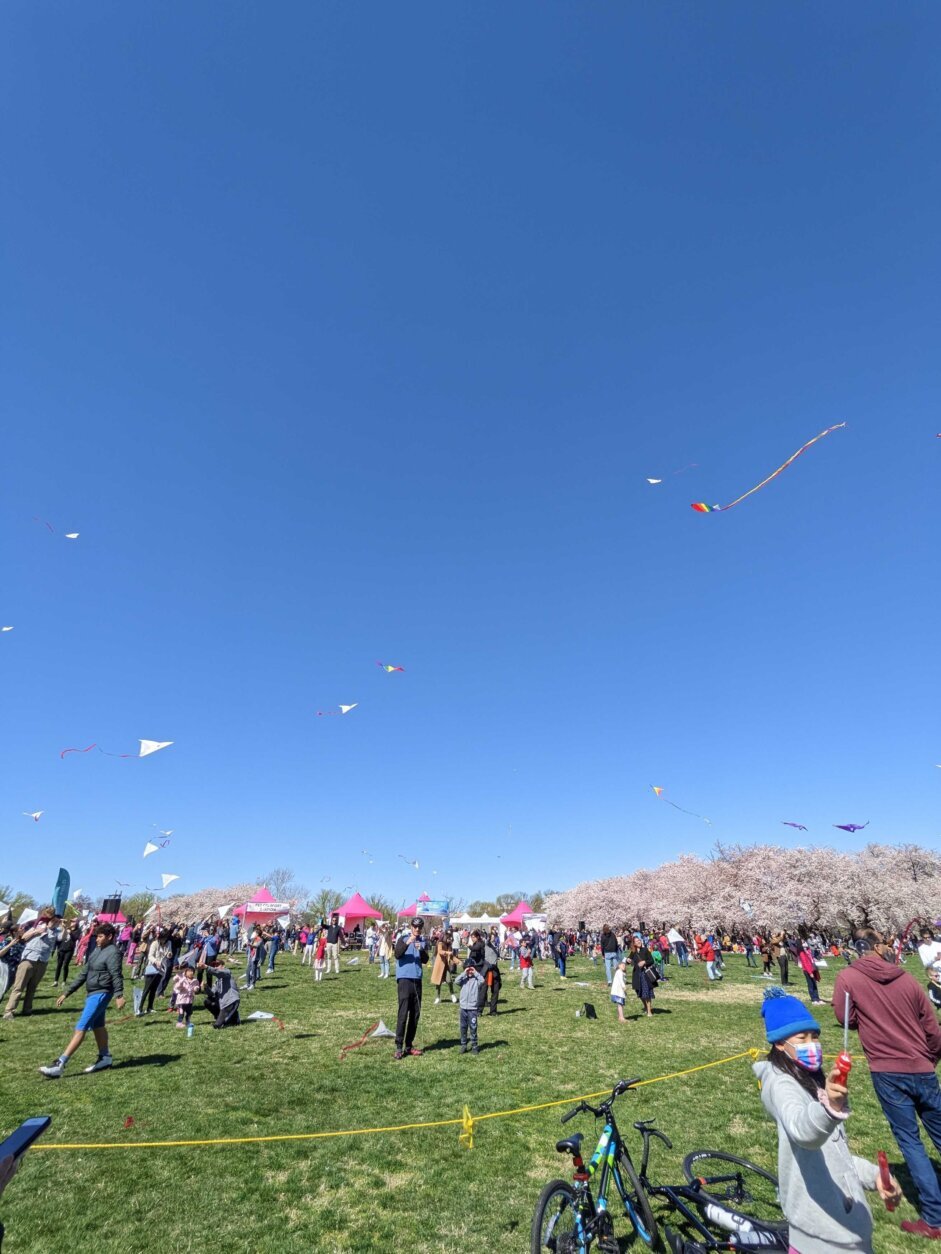
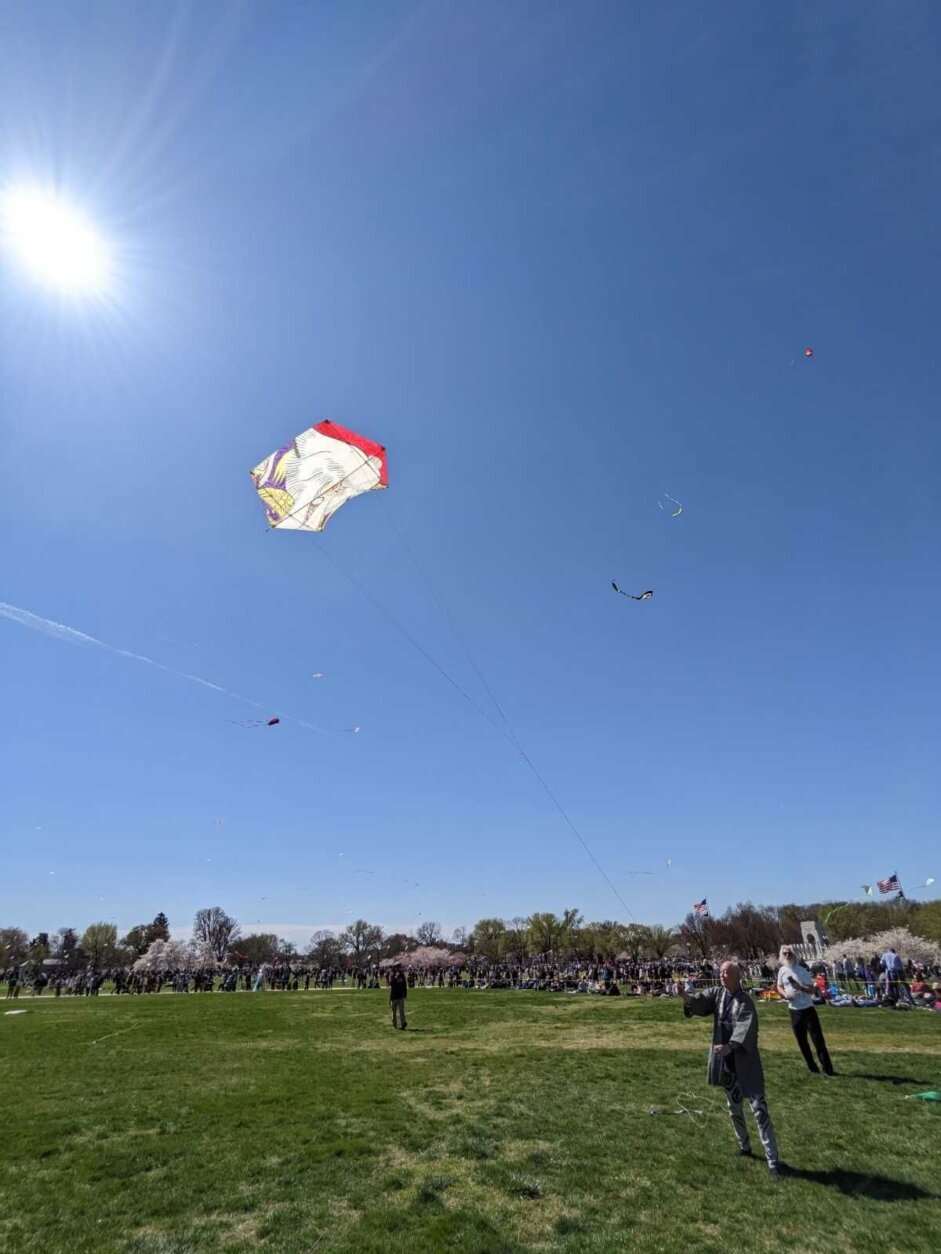
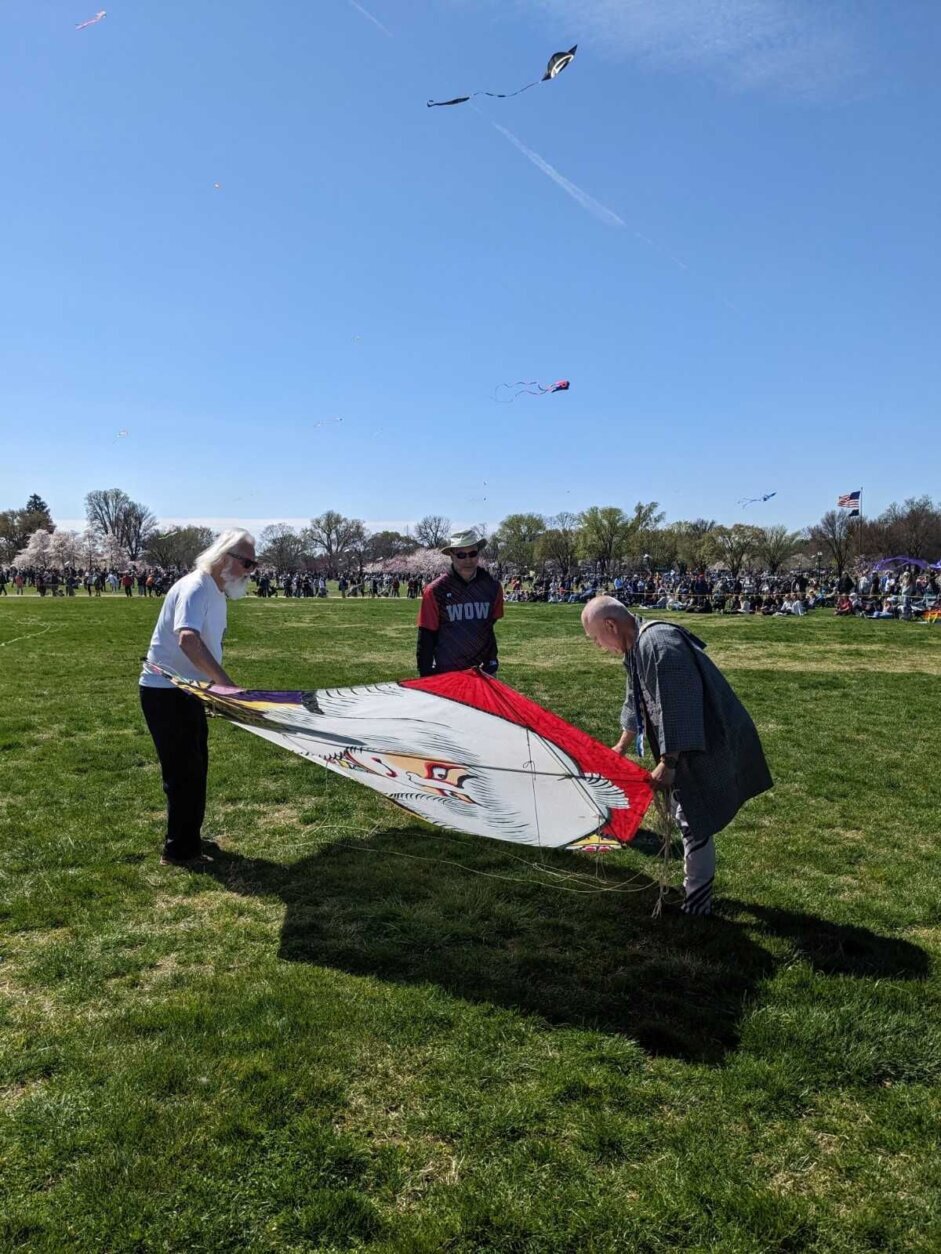
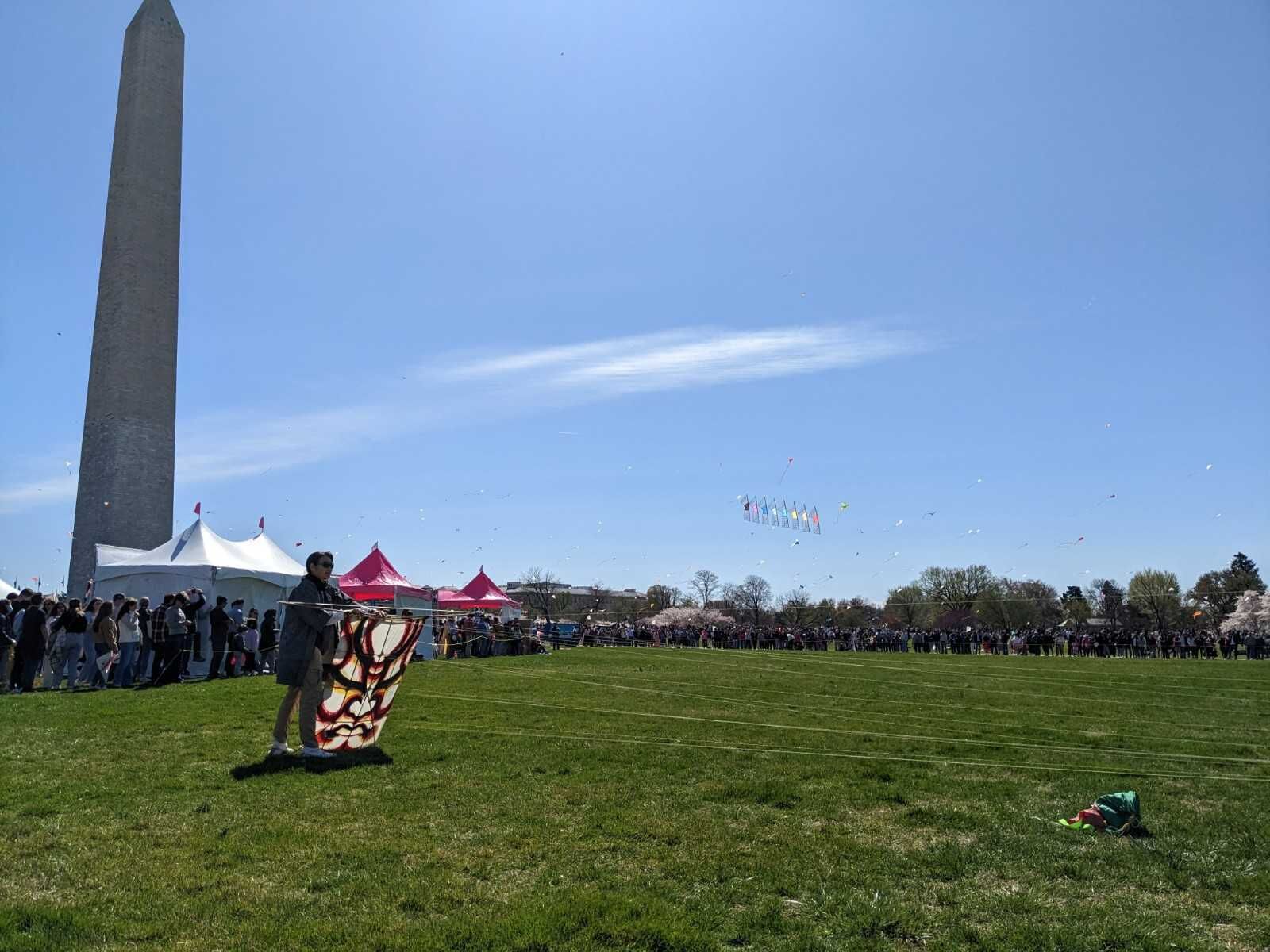
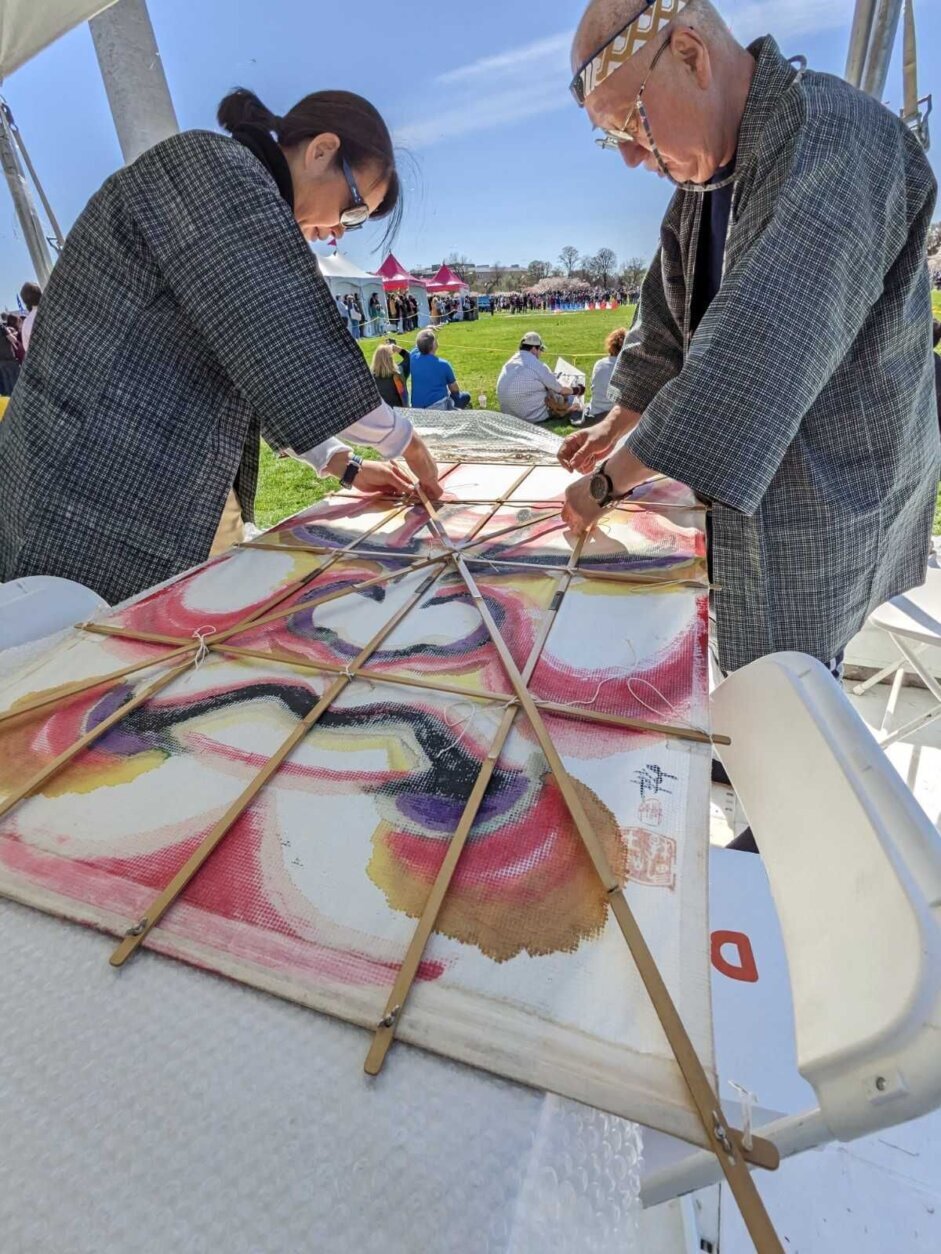
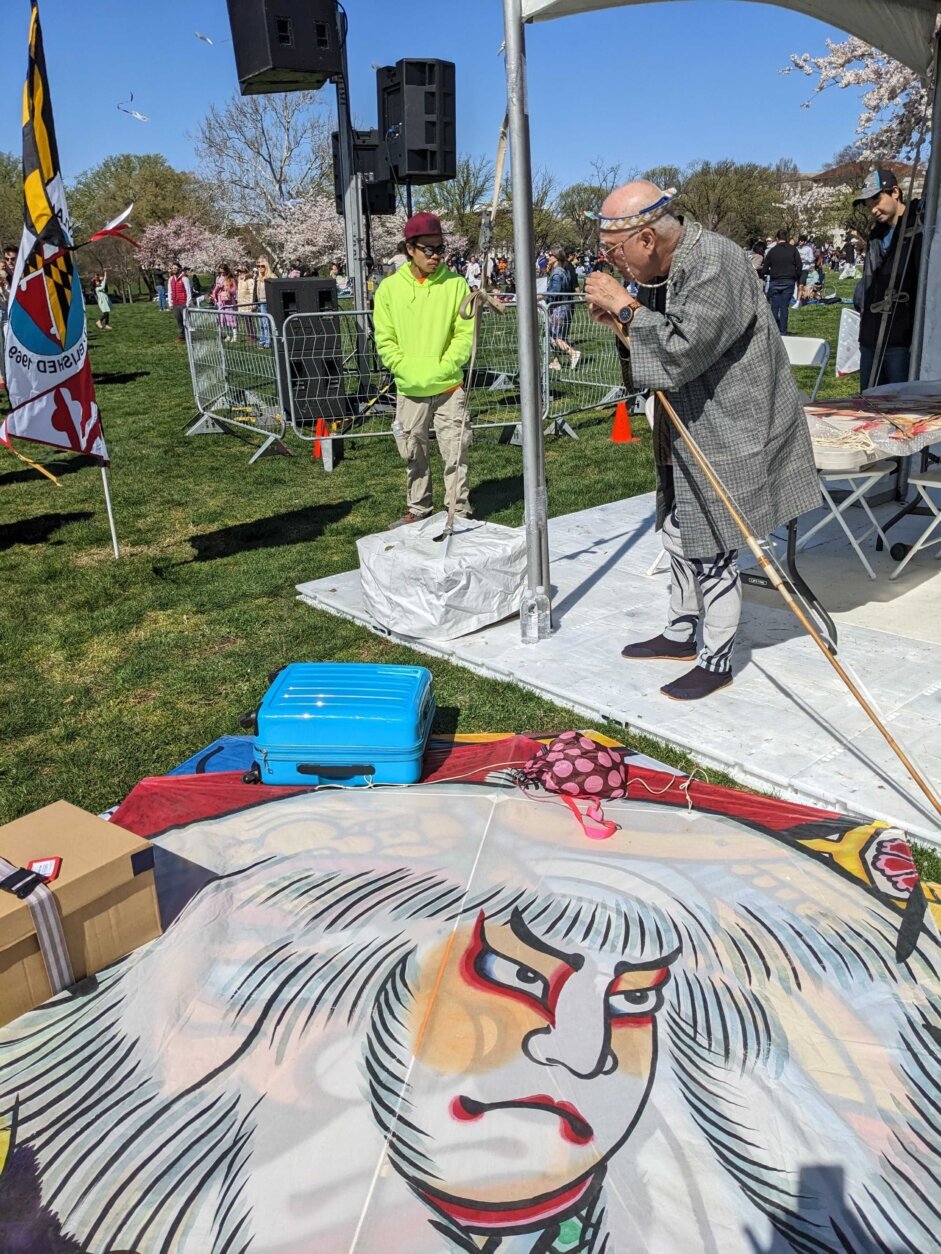
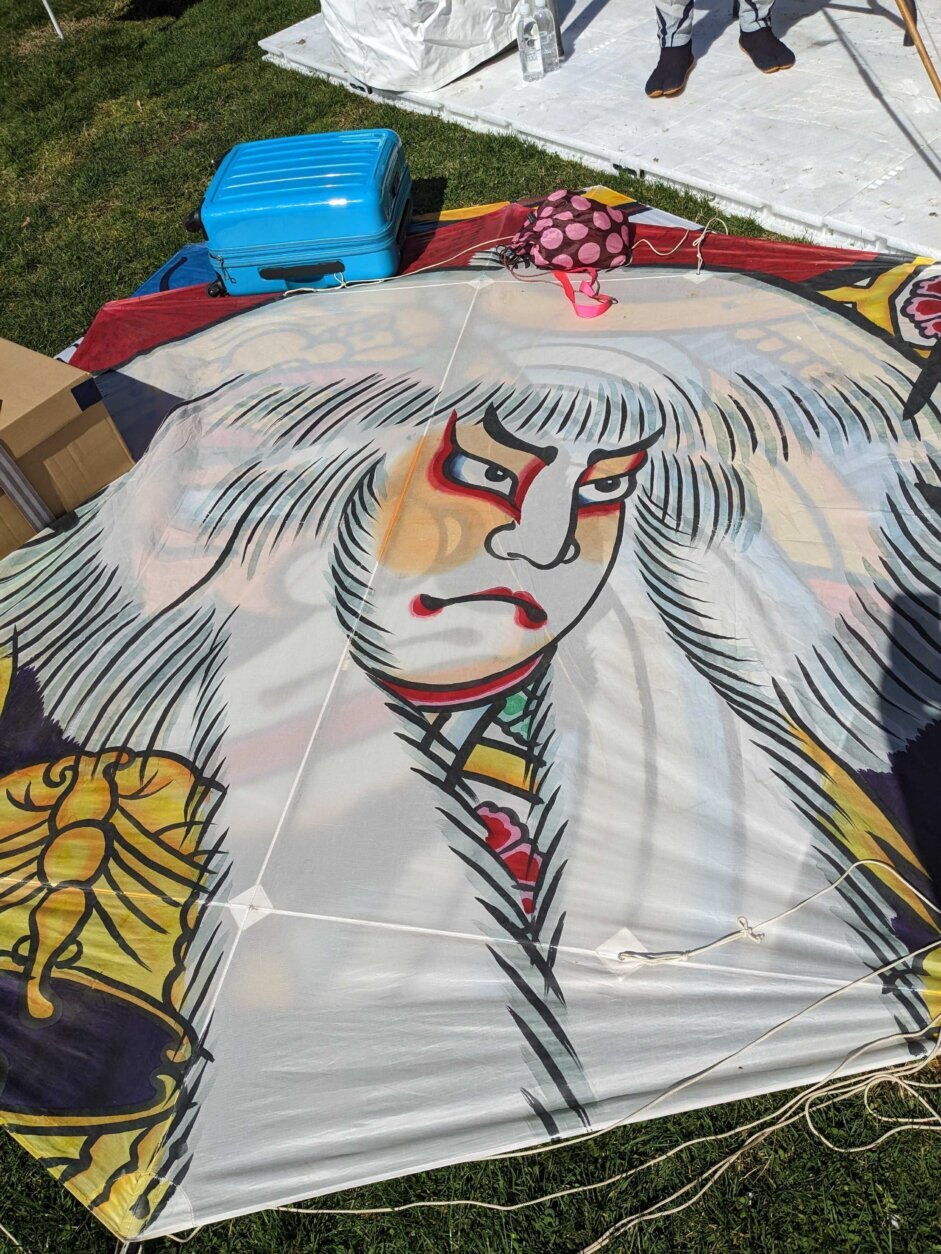
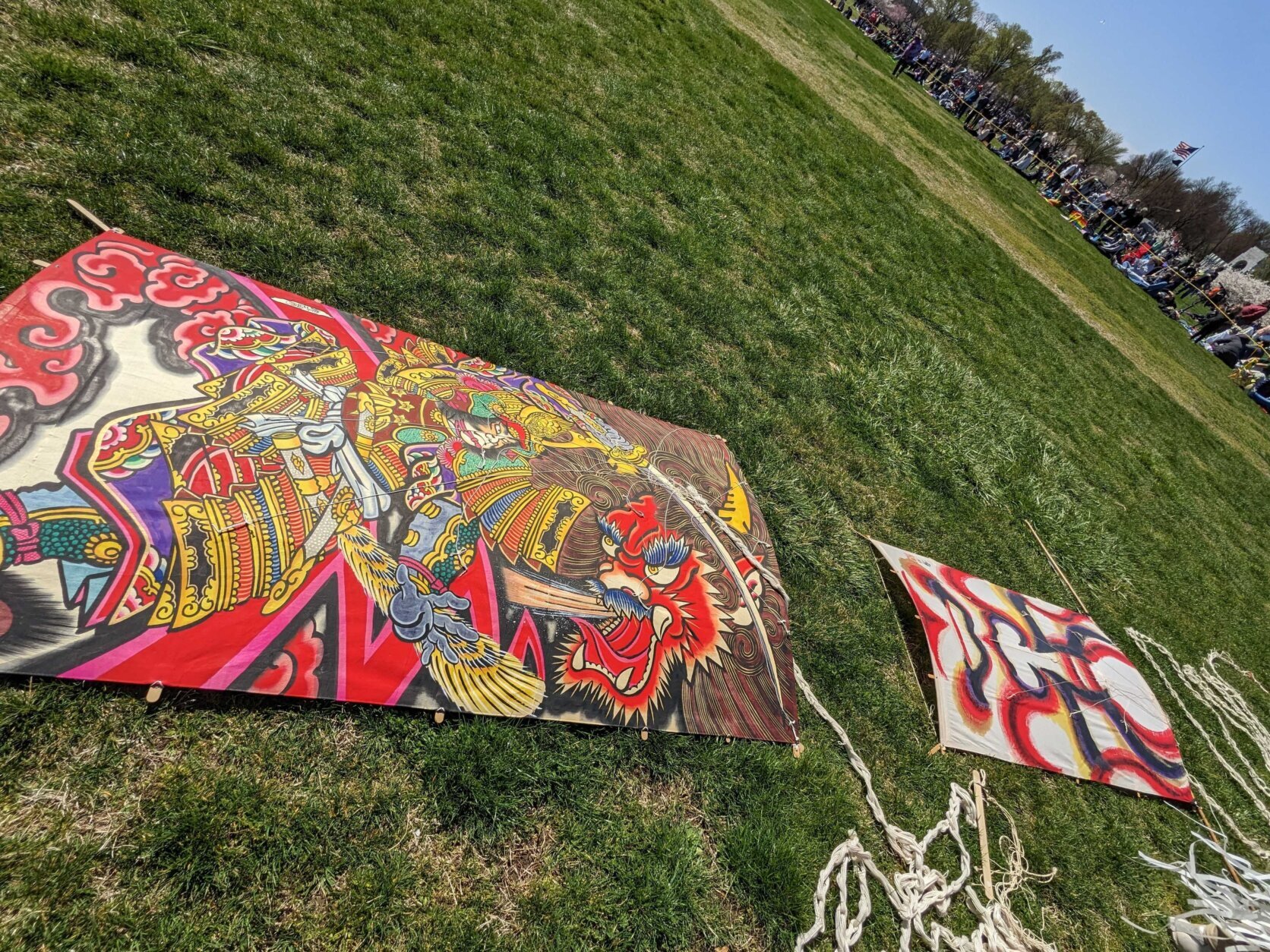
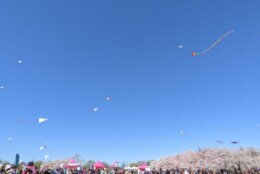
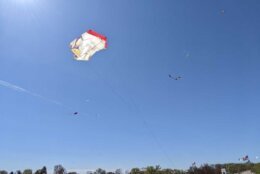
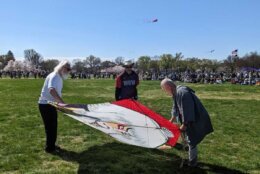
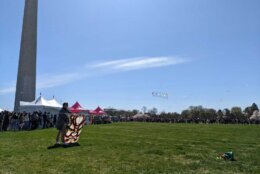
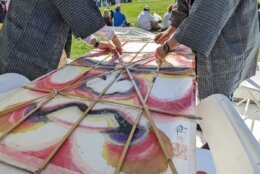

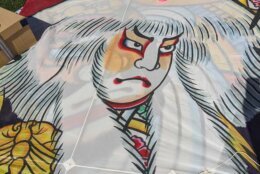
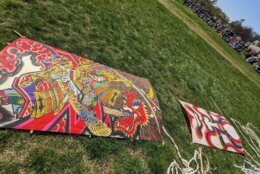
Around Tokyo, kites are typically flown during the New Year’s celebration, but they are also flown on May 5 during what was known as Tango no Sekku or Boys’ Day — renamed Children’s Day. It’s a time when families celebrate the health and happiness of children, according to the Embassy of Japan in the U.S.
Toki said Boys’ Day is a time when families pray that boys become good boys and good adults. “They pray. So his name is on the kite and they fly the kite.”
The American Kitefliers Association said that scholars believe that kites were first developed in China around 450 B.C. They spread to Europe by the 13th century and were regarded as “curiosities” in European culture.
Kites have a sacred significance in many Asian and Polynesian cultures, according to the Library of Congress’ American Folklife Center. For example, in China and Japan, kites are thought to scare off bad spirits and attract good ones.
Kites also have functional uses and have inspired meteorology, science, the military, sports, aviation and astronomy.
Benjamin Franklin used a kite to demonstrate the electrical nature of lightning. Kites have been used to study the weather and the atmosphere. The American Kitefliers Association even links the Wright brothers’ kite flying directly to the invention of the airplane. Kites have even been used during war for espionage activities.
But if you just want to experience the simple of joy of making and flying a kite (and not engage in espionage or extreme sports), Toki said start with an easy one, such as a diamond kite, that most children make and find the perfect day to do it.
“Good kite makes good flying,” Toki said.








